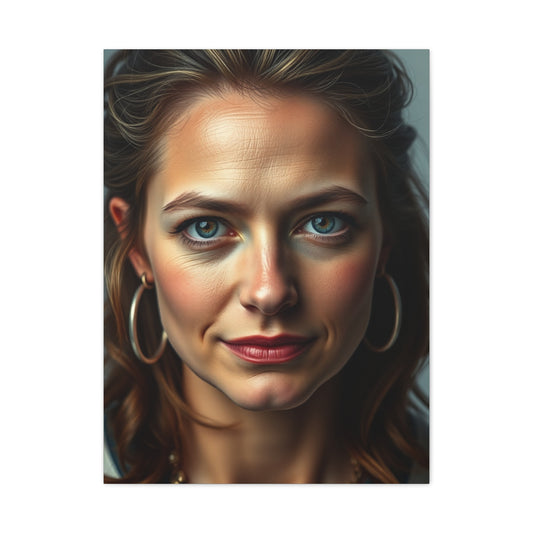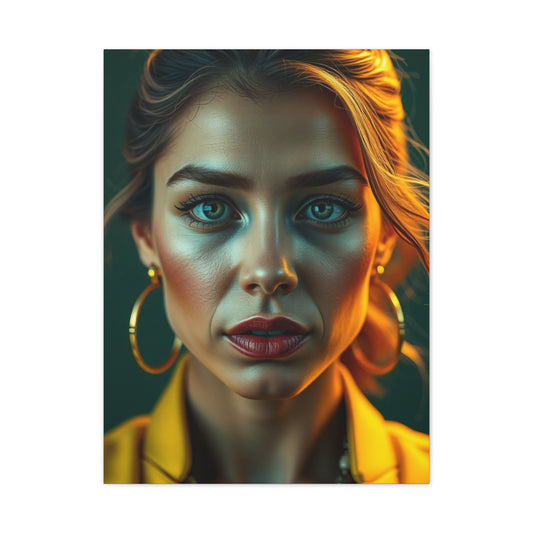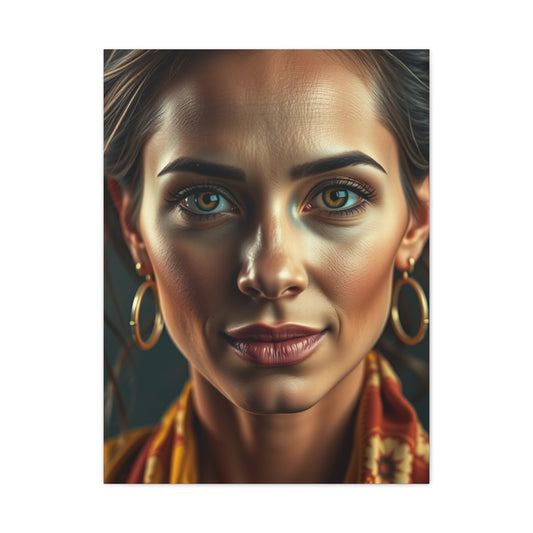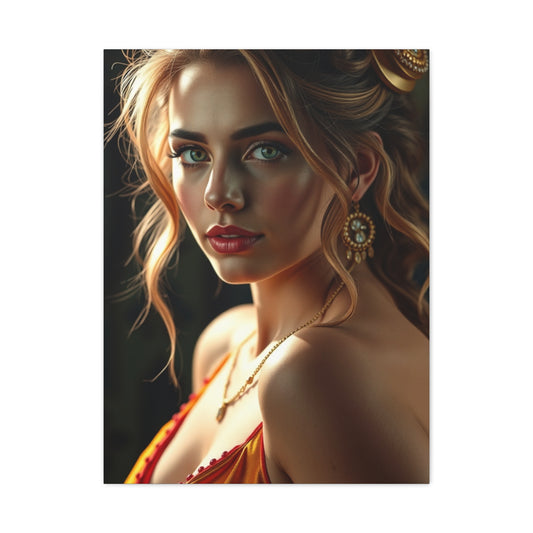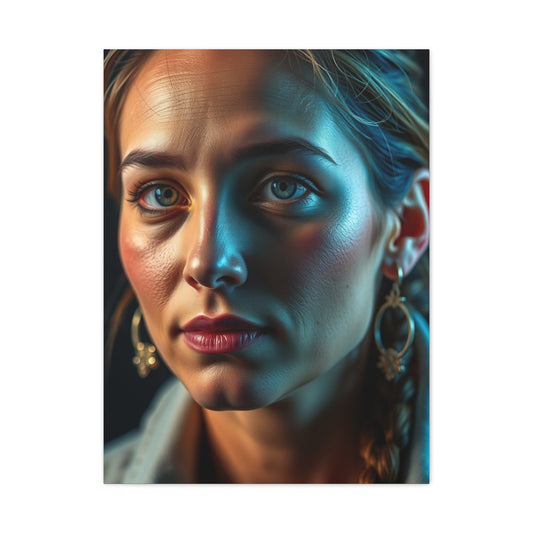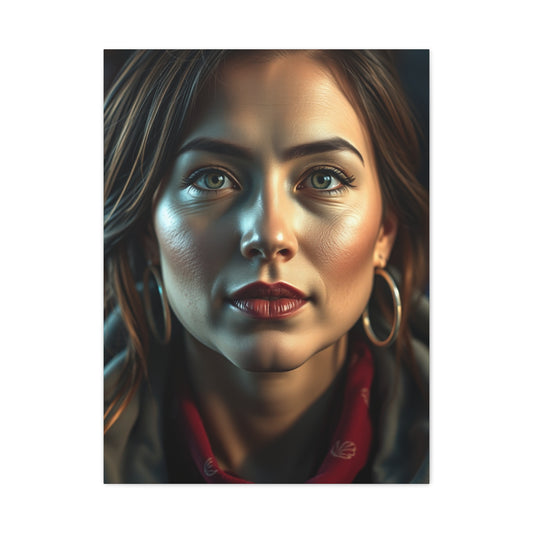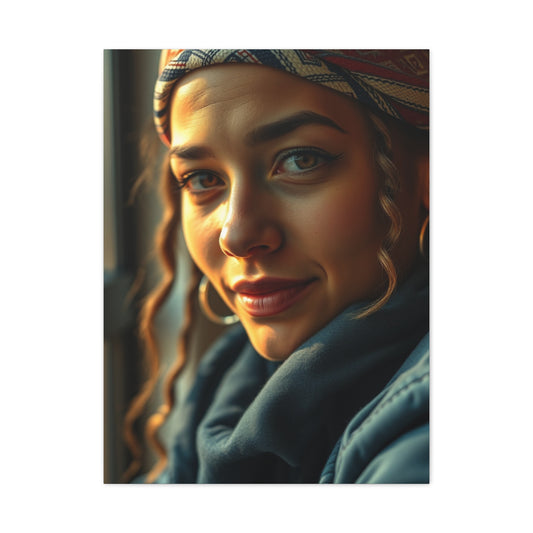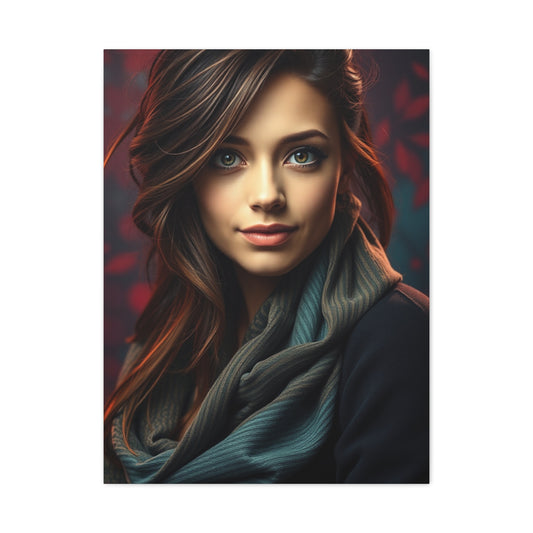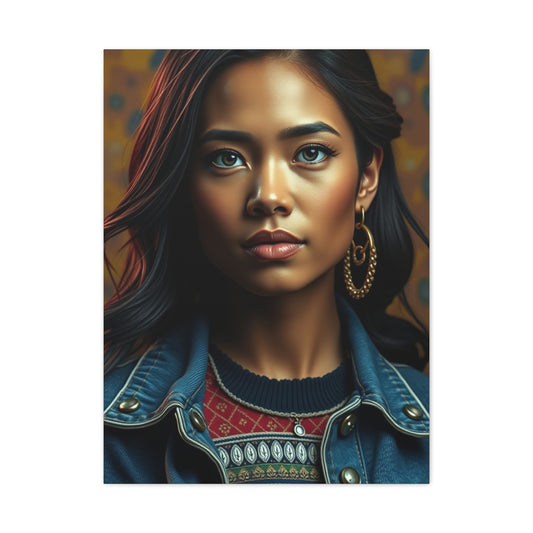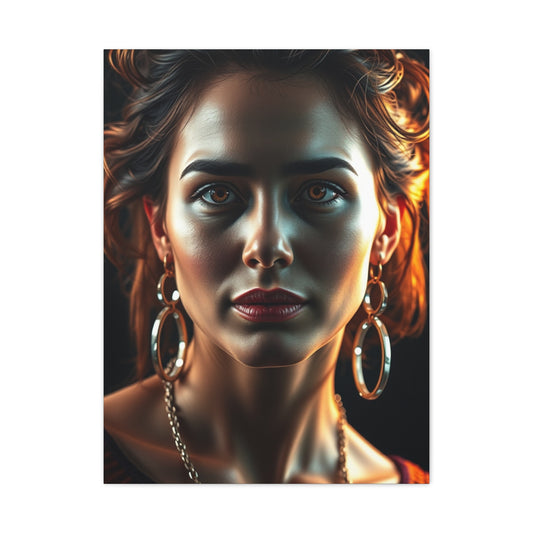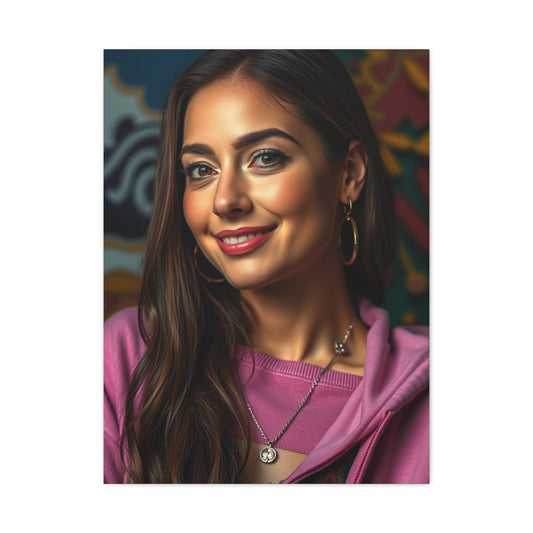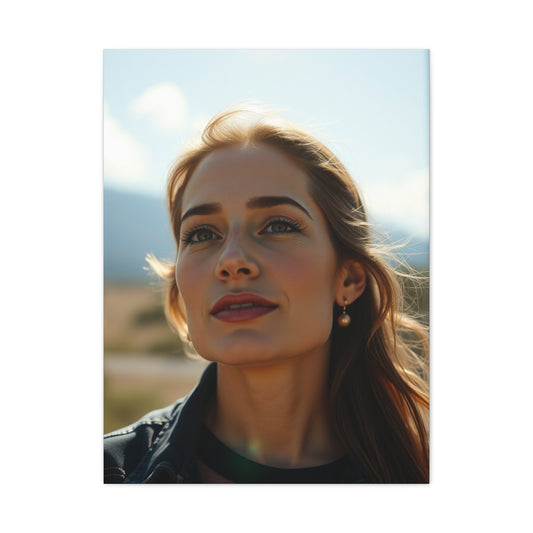Reimagining Interiors through Allayn Stevens’ Artistic Wall Art Home Designs
Interior design has evolved dramatically over recent decades, transforming from mere functional arrangements to sophisticated expressions of personal identity and aesthetic philosophy. Within this dynamic landscape, artistic home decor emerges as a pivotal element that distinguishes exceptional interiors from mundane spaces. The integration of thoughtfully selected artwork, particularly pieces that resonate with contemporary sensibilities while maintaining timeless appeal, creates environments that inspire, comfort, and captivate inhabitants and visitors alike.
The phenomenon of incorporating fine art into residential spaces extends beyond simple decoration, encompassing psychological, cultural, and emotional dimensions that profoundly impact daily experiences. Research consistently demonstrates that engaging with visual art activates neural pathways associated with pleasure, creativity, and emotional regulation, making the selection of appropriate artwork crucial for creating harmonious living environments. This understanding has propelled the popularity of accessible yet sophisticated artistic options that democratize the integration of professional-quality art into everyday spaces.
Contemporary homeowners increasingly seek artistic solutions that balance aesthetic excellence with practical considerations such as durability, versatility, and affordability. The emergence of high-quality reproduction techniques and innovative printing technologies has revolutionized the accessibility of museum-quality artwork, enabling individuals to curate personally meaningful collections without the prohibitive costs traditionally associated with original pieces. This democratization of art ownership has fostered a new appreciation for artistic home decor as an essential component of modern living.
The psychological impact of surrounding oneself with carefully chosen artwork extends far beyond mere visual pleasure. Studies indicate that exposure to aesthetically pleasing imagery can reduce stress hormones, improve cognitive function, and enhance overall wellbeing. The colors, compositions, and themes present in residential artwork influence mood, productivity, and social interactions, making the selection process a deeply personal journey that reflects individual values, aspirations, and emotional needs.
Furthermore, the integration of artistic elements into home environments serves as a form of non-verbal communication, conveying sophisticated taste, cultural awareness, and personal sophistication to guests and family members. The careful curation of artwork demonstrates attention to detail, appreciation for beauty, and commitment to creating meaningful spaces that transcend mere functionality. This aspect of home decoration has become increasingly important in an era where personal spaces serve multiple functions, from professional video conferencing backgrounds to social media content creation.
The evolution of printing technologies has particularly benefited those seeking to incorporate high-quality artistic reproductions into their homes. Advanced giclée printing techniques, utilizing archival inks and premium substrates, produce reproductions that closely approximate the visual characteristics of original artworks while offering superior longevity and resistance to fading. These technological advances have eliminated many traditional barriers to art ownership, enabling broader participation in the cultural practice of art collecting and display.
Essential Considerations for Choosing Allayn Stevens Prints
The selection of appropriate artwork for residential spaces requires careful consideration of multiple factors that extend beyond immediate aesthetic preferences. Understanding these considerations enables homeowners to make informed decisions that enhance both the visual impact and long-term satisfaction derived from their artistic investments. The process involves evaluating spatial characteristics, lighting conditions, existing design elements, and personal aesthetic inclinations to create cohesive and compelling visual narratives.
Color coordination represents one of the most critical aspects of successful art selection, requiring careful analysis of existing palettes and desired atmospheric effects. The chromatic relationships between artwork and surrounding elements can either create harmonious unity or dynamic contrast, depending on the intended design objectives. Understanding color theory principles, including complementary relationships, analogous harmonies, and triadic combinations, empowers homeowners to make selections that enhance rather than compete with existing design elements.
Scale considerations play an equally important role in successful art integration, with dimensions affecting both visual impact and spatial perception. Undersized pieces can appear lost and insignificant within large spaces, while oversized artwork may overwhelm intimate areas or create visual imbalance. The golden ratio and other proportional guidelines provide useful frameworks for determining appropriate sizing, though personal preferences and specific design objectives should ultimately guide final decisions.
The relationship between artwork subject matter and intended room function deserves careful consideration during the selection process. Tranquil landscapes or abstract compositions may enhance relaxation in bedrooms and living areas, while energetic or thought-provoking pieces might stimulate creativity and focus in office environments. Understanding these psychological associations enables strategic placement that amplifies the desired emotional and functional outcomes for each space.
Lighting conditions significantly influence the visual presentation and longevity of artistic prints, making this consideration essential during the selection process. Natural light exposure can cause fading and color shifts over time, particularly in direct sunlight conditions. Understanding the orientation and intensity of light sources within each space enables informed decisions about print materials, framing options, and placement strategies that preserve artwork integrity while optimizing visual presentation.
The existing architectural features and design style of each space provide important contextual information that should inform artwork selection. Contemporary minimalist interiors may benefit from bold, graphic compositions that create focal points without overwhelming clean lines and neutral palettes. Traditional or eclectic spaces might accommodate more ornate or complex compositions that complement existing decorative elements and contribute to layered, sophisticated aesthetics.
Personal resonance with artistic content represents perhaps the most important consideration in the selection process. Artwork that fails to evoke emotional response or personal connection will ultimately feel hollow and unsatisfying, regardless of its technical quality or design appropriateness. The most successful artistic selections create ongoing dialogue between viewer and image, revealing new details and meanings through repeated engagement over time.
Creating Spectacular Gallery Walls with Allayn Stevens Art
Gallery wall creation represents one of the most dynamic and visually impactful approaches to displaying multiple artworks within residential spaces. This design technique allows for creative combinations of different sizes, themes, and styles while creating cohesive visual narratives that transform blank walls into compelling focal points. The successful execution of gallery walls requires careful planning, precise measurement, and understanding of visual balance principles that ensure harmonious rather than chaotic results.
The foundational principle of successful gallery wall design involves establishing a unifying element that connects disparate pieces into a coherent whole. This unifying factor might consist of consistent color schemes, complementary themes, similar framing styles, or shared compositional elements. Without such cohesive elements, gallery walls can appear haphazard and overwhelming, detracting from the individual beauty of each piece and creating visual confusion rather than enhancement.
Planning the layout represents the most critical phase of gallery wall creation, requiring careful consideration of spatial relationships, visual weight distribution, and circulation patterns within the room. Professional designers often recommend creating paper templates of each piece and experimenting with arrangements on the floor before committing to wall placement. This approach allows for experimentation with different configurations while avoiding unnecessary wall damage and ensuring optimal visual balance.
The spacing between individual pieces significantly affects the overall visual impact and coherence of gallery wall installations. Consistent spacing creates formal, organized appearances suitable for traditional or minimalist interiors, while varied spacing can contribute to more casual, eclectic aesthetics. Generally, maintaining distances between two and four inches creates appropriate visual separation while preserving the unified appearance essential for successful gallery walls.
Anchor pieces serve as visual foundations around which smaller elements can be arranged, providing stability and hierarchy within complex compositions. These larger or more visually commanding pieces should be positioned at comfortable viewing heights and serve as reference points for arranging surrounding elements. The strategic placement of anchor pieces prevents gallery walls from appearing unfocused or lacking clear organizational principles.
The integration of different sizes and orientations adds visual interest and dynamic movement to gallery wall compositions. Mixing horizontal, vertical, and square formats creates rhythmic variations that engage viewers and encourage exploration of individual pieces. However, this variety must be balanced against the need for overall coherence, requiring careful attention to visual weight distribution and compositional flow.
Color coordination within gallery walls can be achieved through various strategies, from monochromatic schemes that emphasize tonal variations to complementary palettes that create vibrant contrasts. The surrounding wall color serves as a neutral background that either unifies disparate pieces or provides contrast that enhances individual elements. Understanding these color relationships enables the creation of gallery walls that enhance rather than compete with existing room design elements.
The height at which gallery walls are installed significantly affects both visual impact and viewer comfort. Professional standards recommend positioning the center of gallery wall compositions at approximately 57 to 60 inches from the floor, corresponding to average eye level for most viewers. However, seating arrangements, ceiling heights, and viewing angles may necessitate adjustments to these general guidelines.
Modern Interiors Enhanced by Allayn Stevens Artistic Elements
Contemporary interior design emphasizes clean lines, uncluttered spaces, and purposeful integration of decorative elements that contribute to rather than detract from architectural clarity. Within this aesthetic framework, artwork serves as carefully selected punctuation marks that introduce personality, color, and visual interest without compromising the fundamental principles of modern design philosophy. The successful integration of artistic elements into modern interiors requires understanding the delicate balance between minimalism and visual engagement.
The color palettes characteristic of modern interior design typically feature neutral foundations punctuated by carefully selected accent colors that create visual hierarchy and emotional resonance. Artwork within these spaces must either complement existing color schemes or provide intentional contrast that enhances rather than disrupts the overall aesthetic cohesion. The strategic use of artwork to introduce color allows for flexibility in updating seasonal or trending elements without requiring major renovational changes.
Scale relationships assume particular importance within modern interiors, where each element must justify its presence through both functional and aesthetic contributions. Oversized artwork can serve as dramatic focal points that anchor open floor plans and define spatial boundaries within flowing layouts. Conversely, series of smaller pieces can create visual rhythm and movement that guides circulation patterns and draws attention to specific architectural features.
The integration of artistic elements with modern furniture and lighting requires careful consideration of visual weight, texture, and finish relationships. Sleek, minimalist furniture benefits from artwork that introduces organic shapes, textural interest, or emotional warmth that prevents spaces from feeling sterile or unwelcoming. The interplay between geometric architectural elements and more fluid artistic forms creates dynamic tension that energizes modern interiors.
Lighting design plays a crucial role in optimizing the presentation of artwork within modern spaces. Track lighting, picture lights, and strategically positioned accent fixtures can dramatically enhance the visual impact of carefully selected pieces while contributing to the overall ambiance of the space. The integration of smart lighting systems allows for dynamic adjustment of illumination levels and color temperatures that can transform the mood and appearance of artwork throughout different times of day.
The open floor plans characteristic of modern architecture present unique opportunities and challenges for artwork placement. Large, uninterrupted wall surfaces provide canvases for dramatic artistic statements, while sight lines between different functional areas require coordination of artistic elements to maintain visual coherence throughout connected spaces. The strategic placement of artwork can define functional zones within open layouts while preserving the sense of spatial flow essential to modern design.
Textural contrast becomes particularly important within modern interiors, where smooth surfaces and hard materials predominate. Artwork can introduce tactile interest through varied print surfaces, framing materials, and mounting techniques that add dimensional complexity to otherwise flat wall surfaces. The careful selection of matte versus glossy finishes, textured versus smooth papers, and frame profiles contributes to the overall sensory richness of modern spaces.
Statement Living Room Ideas Featuring Artistic Excellence
The living room functions as the primary social hub within most residential layouts, making it an ideal location for dramatic artistic statements that reflect personal taste while creating conversation-worthy focal points. These spaces accommodate larger gatherings and extended viewing periods, allowing for more complex or detailed artwork that rewards closer examination and repeated viewing. The successful integration of statement artwork into living room environments requires understanding traffic patterns, seating arrangements, and viewing angles that optimize both casual appreciation and focused contemplation.
Large-scale artwork positioned above seating areas creates immediate visual impact while establishing hierarchical relationships between furniture groupings and architectural elements. The proportional relationship between artwork dimensions and underlying furniture must be carefully calibrated to avoid overwhelming or underwhelming effects. Professional designers often recommend artwork widths ranging from two-thirds to three-quarters of the underlying furniture width, though specific spatial characteristics may necessitate adjustments to these general guidelines.
The creation of conversational seating arrangements around prominent artwork encourages social interaction while providing comfortable viewing angles for appreciating artistic details. L-shaped sectional configurations, facing chairs, and strategically positioned accent seating can create intimate discussion areas that naturally draw attention to featured artwork. The integration of appropriate lighting ensures optimal viewing conditions during both daytime and evening social activities.
Color coordination between artwork and existing living room elements requires careful analysis of dominant hues, accent colors, and neutral foundations that comprise the overall palette. Statement pieces can either harmonize with existing schemes or introduce complementary contrasts that energize the space without creating visual chaos. The strategic repetition of artistic colors through accessories, textiles, and accent furniture creates cohesive design narratives that unify diverse elements.
The positioning of statement artwork relative to architectural features such as fireplaces, built-in cabinetry, or prominent windows requires careful consideration of competing focal points. Successful integration involves either creating complementary relationships between these elements or establishing clear hierarchical dominance that prevents visual competition. The use of asymmetrical arrangements can create dynamic balance while accommodating multiple focal points within the same space.
Seasonal flexibility represents an important consideration for living room artwork, particularly in spaces that accommodate holiday decorations or changing textile elements. Neutral or versatile artistic themes allow for easy adaptation to seasonal color schemes and decorative accessories without requiring complete artwork rotation. This flexibility ensures that statement pieces remain relevant and harmonious throughout different decorative cycles.
The integration of multiple statement pieces within larger living rooms requires careful attention to visual weight distribution and thematic coordination. Avoiding symmetrical arrangements while maintaining balance creates sophisticated asymmetrical compositions that feel dynamic rather than static. The strategic use of visual breathing room between major pieces prevents overcrowding while allowing each element to maintain its individual impact.
Bedroom Elegance Through Thoughtful Artistic Integration
Bedroom environments demand particular consideration when selecting and positioning artwork, as these intimate spaces serve multiple functions ranging from rest and relaxation to personal reflection and romantic connection. The artwork chosen for bedroom environments should promote tranquility while reflecting personal aesthetic preferences and creating atmospheres conducive to both relaxation and inspiration. Understanding the psychological impact of color, imagery, and composition within sleeping environments enables informed selections that enhance rather than disrupt restful experiences.
The positioning of artwork within bedroom layouts must accommodate practical considerations such as bed placement, storage furniture, and lighting requirements while optimizing visual impact from primary viewing angles. The wall space above headboards provides the most prominent display location, though care must be taken to ensure secure mounting that prevents safety hazards during sleep or intimate activities. Alternative placement options include opposite walls visible from the bed, creating points of visual interest that can be appreciated during quiet moments.
Color psychology assumes particular importance within bedroom artwork selection, as certain hues can either promote or inhibit restful sleep and relaxation. Cool tones such as blues, greens, and lavenders generally support calming atmospheres, while warm colors like reds and oranges may create stimulating environments less conducive to rest. However, personal color preferences and existing room palettes should ultimately guide selection decisions, as individual responses to color vary significantly.
The thematic content of bedroom artwork should align with the intended emotional atmosphere and functional requirements of the space. Peaceful landscapes, abstract compositions, or gentle figurative works often complement the restorative function of bedrooms, while more energetic or provocative themes might prove distracting or overstimulating. The intimate nature of bedroom environments also allows for more personal or meaningful subject matter that might feel too private for public living areas.
Lighting considerations within bedroom environments present unique challenges and opportunities for artwork presentation. Natural light patterns change throughout the day, affecting the appearance and visibility of artwork positioned near windows. The integration of adjustable artificial lighting, including bedside lamps, overhead fixtures, and dedicated picture lights, ensures optimal viewing conditions while supporting the multiple lighting needs of bedroom activities.
Privacy considerations may influence both artwork selection and placement within bedroom environments. Pieces visible from doorways or windows might require different consideration than those viewable only from within the room. The intimate nature of bedroom spaces often accommodates more personal or romantic themes that reflect the private relationship between occupants and their personal sanctuary.
The coordination of artwork with bedroom textiles, including bedding, window treatments, and area rugs, creates cohesive design schemes that feel intentional rather than accidental. The strategic repetition of artistic colors through fabric selections reinforces color relationships while maintaining flexibility for seasonal or style updates. This coordination approach ensures that artwork remains integrated with evolving decorative elements rather than appearing disconnected or dated.
Exploring Affordable Wall Art Options for Every Budget
The democratization of art through affordable reproduction techniques has revolutionized interior design possibilities for budget-conscious homeowners seeking to incorporate sophisticated artistic elements into their living spaces. Understanding the various options available at different price points enables informed decisions that maximize aesthetic impact while respecting financial constraints. The key lies in recognizing that effective artistic integration depends more on thoughtful selection and presentation than on the monetary value of individual pieces.
Print-on-demand services have emerged as particularly valuable resources for accessing diverse artistic content at accessible price points. These platforms typically offer extensive catalogs featuring works from emerging artists, established illustrators, and curated collections that span multiple styles and themes. The ability to customize sizes, paper types, and finishing options provides flexibility for addressing specific spatial requirements while maintaining budget consciousness.
Seasonal sales and promotional periods present opportunities for acquiring higher-quality pieces at reduced prices. Many online retailers and traditional art vendors offer significant discounts during holiday periods, end-of-season clearances, and special promotional events. Developing awareness of these cycles and planning purchases accordingly can substantially reduce costs while accessing premium quality reproductions and original works.
The exploration of local artist communities and art fairs provides access to original works at prices often comparable to or only slightly higher than commercial reproductions. Supporting emerging local artists not only contributes to community cultural development but also ensures truly unique pieces that reflect regional aesthetic sensibilities and creative perspectives. These relationships often provide opportunities for custom commissions or special pricing arrangements.
Digital marketplaces and online auction platforms offer vast selections of both original and reproduction artworks across all price ranges. The competitive nature of these platforms often results in favorable pricing, though buyers must exercise caution regarding quality assurance and seller reliability. Reading reviews, requesting detailed photographs, and understanding return policies help mitigate risks associated with online art purchases.
The strategy of building collections gradually rather than attempting comprehensive room decoration in single purchasing episodes allows for more thoughtful selection while spreading costs over extended periods. This approach enables the acquisition of higher-quality pieces within budget constraints while allowing personal tastes and room requirements to evolve naturally. The cumulative effect of carefully chosen additions often exceeds the impact of larger, hastily assembled collections.
Alternative sources such as estate sales, thrift stores, and consignment shops occasionally yield exceptional discoveries at fraction of typical retail prices. These venues require patience and regular exploration but can provide access to vintage pieces, original works, and unique frames that enhance both artistic and financial value. The treasure hunt aspect of these searches often proves as rewarding as the discoveries themselves.
Understanding the Distinctions Between Framed and Canvas Prints
The choice between framed prints and canvas presentations significantly affects both the aesthetic presentation and practical considerations of artwork integration within residential environments. Understanding the characteristics, advantages, and limitations of each format enables informed decisions that align with specific design objectives, budget parameters, and maintenance preferences. Both options offer distinct visual qualities that can enhance different interior design styles and functional requirements.
Framed prints provide traditional presentation methods that offer protection for the underlying artwork while enabling diverse aesthetic treatments through frame selection. The frame itself becomes an integral design element that can either complement or contrast with the artwork content, room decor, and architectural features. This flexibility allows for easy updates to the overall appearance through frame changes without requiring new artwork purchases, providing long-term adaptability to evolving design preferences.
The protective qualities of framing extend the longevity of paper-based prints by shielding them from environmental factors such as humidity, dust, and physical contact that can cause degradation over time. Museum-quality matting and glazing materials provide archival protection that preserves color integrity and paper condition for decades when properly maintained. This preservation aspect makes framed presentations particularly suitable for valuable or sentimental pieces intended for long-term display.
Canvas prints offer contemporary presentation alternatives that eliminate the visual barriers created by frames and glazing materials. The direct viewing experience provided by canvas presentations can enhance color saturation and eliminate reflective glare that sometimes interferes with framed piece appreciation. The absence of frames also creates seamless integration with modern interior design aesthetics that emphasize clean lines and uninterrupted surfaces.
The textural qualities inherent in canvas presentations add dimensional interest that can enhance the perceived value and sophistication of reproduction artworks. The subtle surface variations characteristic of canvas substrates create visual depth that approximates the appearance of original paintings while providing tactile interest that engages multiple sensory experiences. This textural component becomes particularly valuable within minimalist environments where such details assume greater relative importance.
Installation considerations differ significantly between framed and canvas options, affecting both complexity and mounting requirements. Framed pieces typically require more robust mounting systems due to increased weight and wind resistance from glazing materials. Canvas prints generally offer easier installation with simpler mounting requirements, though proper tensioning and environmental considerations remain important for maintaining appearance quality over time.
Cost considerations often favor canvas presentations, particularly for larger sizes where frame and glazing expenses can substantially increase overall investment requirements. The elimination of matting, framing, and glazing materials reduces both initial costs and potential maintenance expenses while simplifying the selection process. This economic advantage makes canvas presentations particularly attractive for creating impactful displays within budget constraints.
The maintenance requirements for framed versus canvas presentations involve different considerations and procedures. Framed pieces require periodic cleaning of glazing materials and attention to seal integrity that prevents moisture infiltration. Canvas presentations need protection from physical damage and environmental extremes while allowing for easier surface cleaning and reduced risk of breakage during handling or relocation.
Professional DIY Styling Tips for Optimal Artwork Presentation
The presentation quality of artwork significantly influences its visual impact and integration within interior design schemes, making styling techniques crucial for maximizing the aesthetic value of artistic investments. Professional presentation methods can elevate even modest pieces to gallery-quality appearances while ensuring proper protection and longevity. Understanding these techniques empowers homeowners to achieve sophisticated results while maintaining control over both aesthetic outcomes and financial investments.
Proper measurement and planning form the foundation of successful artwork styling, preventing costly mistakes and ensuring optimal visual relationships between pieces and surrounding elements. The use of precise measuring tools, level indicators, and marking techniques ensures accurate placement that appears intentional rather than haphazard. Creating detailed plans that include exact dimensions, spacing calculations, and reference points prevents errors that can compromise the overall visual effect.
The selection of appropriate mounting hardware requires consideration of wall construction, artwork weight, and environmental factors that affect installation stability and longevity. Different wall materials demand specific mounting solutions, from hollow wall anchors for drywall installations to masonry fasteners for brick or concrete surfaces. Understanding these requirements prevents installation failures that could damage both artwork and surrounding surfaces.
Template creation using paper or cardboard cutouts allows for experimentation with placement options before creating permanent mounting holes. This technique proves particularly valuable for gallery wall arrangements or situations involving multiple pieces where spatial relationships affect overall visual impact. The ability to visualize final arrangements through temporary positioning prevents costly mistakes and enables optimization of visual balance.
The use of consistent hanging heights throughout connected spaces creates visual continuity that unifies different rooms while accommodating various artwork sizes and proportions. Establishing reference lines at appropriate heights ensures professional appearance while simplifying the installation process for multiple pieces. This systematic approach prevents the uneven or chaotic appearance that results from arbitrary height selections.
Lighting integration requires coordination between natural and artificial sources to ensure optimal artwork presentation throughout different times of day and seasonal conditions. The positioning of track lights, picture lights, or accent fixtures should complement rather than compete with artwork while providing sufficient illumination for comfortable viewing. Understanding shadow patterns and reflection angles prevents lighting solutions that create visual interference.
The consideration of viewing angles and circulation patterns within each space ensures that artwork placement enhances rather than impedes normal traffic flow while optimizing appreciation opportunities. Pieces positioned along primary circulation routes receive maximum exposure but must be protected from accidental contact. Alcoves, seating areas, and transitional zones provide alternative locations that encourage contemplative viewing while maintaining practical accessibility.
Seasonal rotation strategies enable ongoing refreshment of visual environments while protecting artwork from excessive exposure and providing storage solutions for growing collections. The systematic documentation of display schedules, storage conditions, and maintenance requirements ensures proper care while maximizing the utilization of available artistic resources. This approach transforms static displays into dynamic, evolving presentations that maintain visual interest over extended periods.
Seasonal Decor Integration with Artistic Elements
The integration of seasonal decorative themes with permanent artwork collections requires sophisticated understanding of color relationships, thematic coordination, and flexible presentation strategies that accommodate changing aesthetic requirements throughout the year. Successful seasonal integration enhances rather than overwhelms existing artistic elements while creating fresh visual narratives that reflect natural cycles and cultural celebrations. This approach transforms static interior environments into dynamic, responsive spaces that maintain relevance and interest across different seasons.
Spring integration strategies typically emphasize renewal themes through fresh color palettes, floral motifs, and increased natural light utilization that energizes winter-weary interiors. The coordination of existing artwork with spring accessories requires careful attention to color relationships that complement rather than compete with established artistic elements. Soft pastels, vibrant greens, and warm yellows can be introduced through textiles, accessories, and temporary decorative elements that enhance without overwhelming permanent artwork.
Summer presentations often feature brighter, more energetic themes that reflect increased daylight hours and outdoor activities. The challenge lies in maintaining sophisticated aesthetic standards while accommodating the casual, relaxed atmospheres associated with summer living. Lightweight textiles, fresh floral arrangements, and enhanced natural light create seasonal ambiance that complements rather than conflicts with existing artistic installations.
Autumn transitions provide opportunities for introducing richer, warmer color palettes that complement the natural world's transformation while creating cozy, intimate atmospheres suitable for increased indoor activities. The strategic introduction of amber, burgundy, and golden hues through accessories and lighting can enhance artwork that features complementary colors while maintaining sophisticated presentation standards. The layering of textures through throws, pillows, and seasonal accessories adds dimensional interest that complements artistic elements.
Winter presentations emphasize comfort, warmth, and intimate gathering spaces that support extended indoor activities and holiday celebrations. The integration of seasonal lighting, including candles, string lights, and enhanced artificial illumination, creates atmospheric conditions that can dramatically alter the appearance and impact of existing artwork. Understanding these lighting relationships enables seasonal presentations that enhance rather than compromise artistic appreciation.
The storage and rotation of seasonal accessories requires organized systems that protect both temporary and permanent elements while facilitating easy transitions between different aesthetic themes. Climate-controlled storage prevents damage to sensitive materials while systematic organization ensures efficient access during seasonal transitions. The documentation of successful combinations and arrangements facilitates consistent implementation of effective seasonal presentations.
Exploring the Rich Symbolism in Artistic Compositions
The symbolic content embedded within artistic compositions adds layers of meaning and personal significance that extend far beyond immediate aesthetic appreciation. Understanding these symbolic dimensions enables deeper engagement with artwork while providing intellectual frameworks for selection decisions that resonate with personal values, cultural backgrounds, and aspirational goals. The ability to recognize and interpret symbolic elements transforms passive viewing into active dialogue between viewer and artistic content.
Color symbolism represents one of the most accessible entry points for understanding artistic meaning, as cultural associations with different hues create immediate emotional and intellectual responses. The psychological impact of color combinations, saturation levels, and contrasting relationships affects mood, energy levels, and cognitive processing in measurable ways. Understanding these associations enables selection of artwork that supports desired emotional atmospheres while reflecting personal aesthetic preferences.
Compositional elements such as lines, shapes, and spatial relationships convey symbolic meanings that operate below conscious awareness while influencing emotional responses to artistic works. Vertical lines suggest stability and growth, horizontal elements evoke calm and rest, while diagonal compositions create dynamic energy and movement. The strategic recognition of these compositional effects enables selection of artwork that supports intended environmental atmospheres.
Natural imagery carries universal symbolic associations that transcend cultural boundaries while offering opportunities for personal interpretation and connection. Water elements suggest flow, change, and emotional depth, while mountain imagery evokes stability, permanence, and aspiration. Understanding these archetypal associations provides frameworks for selecting artwork that resonates with personal values and life circumstances.
Abstract compositions offer more subjective symbolic interpretation opportunities, allowing viewers to project personal meanings and associations onto non-representational forms. The freedom from literal subject matter enables deeper exploration of color relationships, textural qualities, and compositional dynamics that speak to individual sensibilities. This interpretive flexibility makes abstract artwork particularly suitable for personal spaces where individual meaning takes precedence over universal recognition.
The cultural context surrounding specific artistic styles and traditions adds historical and social dimensions to symbolic interpretation. Understanding the origins and evolution of different artistic movements provides enriched appreciation opportunities while enabling more informed selection decisions. This knowledge transforms artwork from mere decoration into cultural artifacts that connect personal spaces with broader artistic and historical narratives.
The integration of symbolic artwork within specific room functions can enhance the intended atmosphere and activities associated with each space. Artwork featuring growth symbolism might enhance office environments dedicated to professional development, while pieces emphasizing harmony and balance could support meditation or relaxation areas. This strategic alignment between symbolic content and functional purpose creates more intentional and supportive living environments.
Thoughtful Gift Ideas for Art Enthusiasts and Collectors
The selection of artwork as gifts requires sophisticated understanding of recipient preferences, existing collections, and aesthetic sensibilities that may differ significantly from personal taste. Successful art gifting demonstrates thoughtfulness, cultural awareness, and appreciation for the recipient's individual style while introducing new perspectives or complementing established collections. The challenge lies in balancing personal expression with recipient preferences while maintaining the element of surprise essential to meaningful gift experiences.
Understanding the recipient's existing design aesthetic and color preferences provides essential guidance for selecting artwork that will integrate successfully within their living environments. Observation of their current decorative choices, preferred color palettes, and style preferences offers valuable insights that inform appropriate selections. This research phase ensures that gifts enhance rather than conflict with established aesthetic frameworks.
The consideration of practical factors such as available wall space, existing artwork arrangements, and lifestyle requirements affects the suitability of different artistic options. Portable or easily repositioned pieces offer flexibility for recipients who may relocate or redecorate frequently, while larger statement pieces require confident knowledge of available space and long-term commitment to specific locations.
Custom or personalized artwork options provide opportunities for creating truly unique gifts that reflect specific relationships, shared experiences, or meaningful locations. Commissioned pieces based on favorite photographs, meaningful locations, or shared memories create irreplaceable gifts that demonstrate exceptional thoughtfulness and consideration. These options often provide superior emotional value while remaining accessible from budgetary perspectives.
The presentation and packaging of artistic gifts significantly affects recipient experience and perceived value. Professional-quality packaging, including protective materials, elegant wrapping, and informative documentation, demonstrates respect for both the artwork and recipient while creating memorable unveiling experiences. The inclusion of care instructions and artistic background information adds educational value that enhances long-term appreciation.
Limited edition or numbered prints offer collectible qualities that appeal to serious art enthusiasts while maintaining accessibility for gift-giving purposes. The exclusivity associated with limited editions creates special significance while potentially providing future value appreciation. Understanding edition sizes, artist signatures, and certificate authenticity helps ensure meaningful selections within this category.
The timing of art gifts can enhance their significance and reception, with connections to special occasions, personal milestones, or seasonal celebrations adding layers of meaning. Artwork commemorating graduations, career achievements, or life transitions creates lasting reminders of important moments while providing ongoing aesthetic pleasure. The strategic alignment of artistic themes with occasion significance demonstrates exceptional thoughtfulness and consideration.
Final Thoughts:
The journey of integrating Allayn Stevens’ artistic wall art into residential interiors exemplifies the powerful synergy between aesthetics, psychology, and personal expression. Interior design has transcended its historical role as mere spatial organization, evolving into a platform for storytelling and identity. By thoughtfully incorporating artworks that resonate with both contemporary trends and timeless appeal, homeowners can craft spaces that inspire creativity, evoke emotion, and foster a sense of well-being. Allayn Stevens’ pieces, with their distinctive style and emotional depth, exemplify the potential of art to elevate everyday environments from functional to extraordinary.
The psychological and emotional benefits of surrounding oneself with carefully chosen artwork are profound. Exposure to visually engaging compositions can reduce stress, enhance cognitive functioning, and elevate overall mood. This demonstrates that wall art is not simply decorative but a vital contributor to quality of life. Whether displayed in living rooms, bedrooms, or personal studios, Allayn Stevens’ prints create an immersive experience that nurtures both emotional and intellectual engagement, transforming static spaces into dynamic environments.
Accessibility is another defining aspect of contemporary artistic integration. Advances in high-quality reproduction techniques, such as giclée printing, allow homeowners to enjoy museum-quality art at approachable price points. Canvas and framed prints alike provide options for varying aesthetic preferences and spatial constraints, enabling artistic expression without the prohibitive costs of original pieces. This democratization of art makes it possible for anyone to curate spaces that reflect individuality and cultural awareness, while also promoting a personal connection to the creative process.
Successful integration of Stevens’ wall art requires attention to factors such as scale, lighting, color coordination, and room function. Large-scale statement pieces can anchor living spaces, while gallery walls allow for layered narratives that encourage exploration and engagement. In bedrooms, tranquil compositions enhance relaxation, while in workspaces, energetic or thought-provoking imagery stimulates focus and creativity. Proper placement, viewing angles, and lighting choices further amplify the impact of each piece, ensuring that artistic intentions are fully realized.
Moreover, Allayn Stevens’ artwork serves as a form of non-verbal communication. It conveys taste, cultural sophistication, and attention to detail, allowing homeowners to share their aesthetic sensibilities with guests in subtle yet powerful ways. Art becomes both an intimate reflection of personal identity and a public statement of design philosophy. Seasonal rotations, coordinated textiles, and complementary decor further enhance the dynamic integration of art into living spaces, demonstrating that interior design is an evolving, interactive practice rather than a static pursuit.
Ultimately, incorporating Allayn Stevens’ artistic wall art into home interiors is a journey of intentionality, creativity, and personal resonance. By carefully considering spatial dynamics, emotional impact, and symbolic meaning, homeowners can transform ordinary rooms into extraordinary environments that celebrate both beauty and individuality. The deliberate curation of art fosters meaningful connections, inspires daily living, and elevates interior design to an art form in its own right. In embracing this philosophy, every wall becomes a canvas, and every room tells a story—one that reflects the unique vision, personality, and aesthetic aspirations of those who inhabit it.


